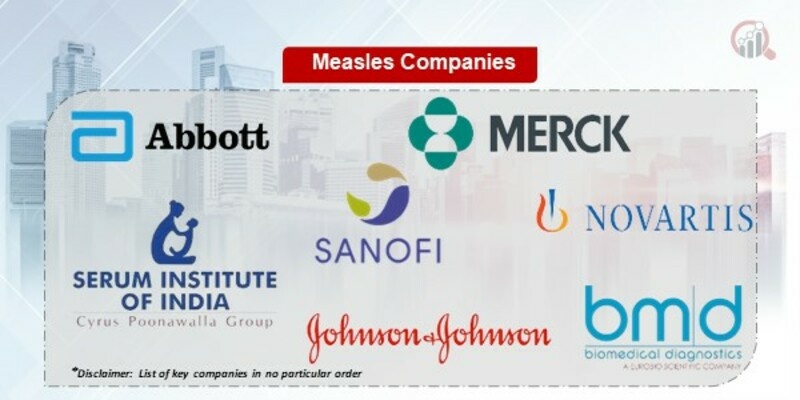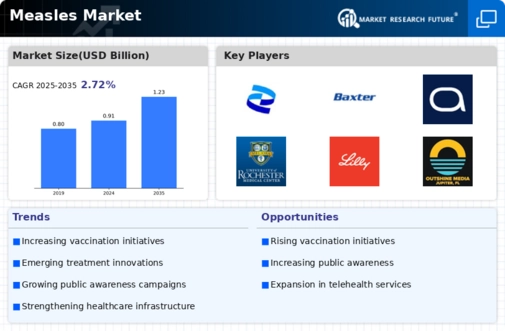Top Industry Leaders in the Measles Market

Latest Measles Companies Update
November 2023: Indian Immunologicals (IIL) has introduced the Mabella measles and rubella vaccination for children. Mabella, a live-attenuated MR vaccine developed in collaboration with the Polyvac Institute of Vietnam, was released as part of the 25th anniversary celebrations of the IIL division Human Biologicals Institute (HBI) in India. Extensive human clinical studies have shown that the vaccination is both safe and efficacious. The event highlights the critical need for measles and rubella control, which kill over one lakh children worldwide. The vaccine producer stated in a press on the activities of the division that was created in 1998 that HBI had indigenously produced the country's "first safe vero-cell rabies vaccine Abhayrab [thus] paving the way for the government of India to phase out the painful nerve tissue vaccine."
April 2023: South Sudan's Ministry of Health, in collaboration with Gavi, the Vaccine Alliance, UNICEF, WHO, and other important partners, has initiated a statewide measles vaccination campaign in April 2023. More than 2.7 million youngsters aged 6-59 months will be vaccinated against the highly contagious illness as part of the program. South Sudan's perseverance in carrying out immunization campaigns, despite conflicting health priorities such as recovery from the COVID-19 epidemic, is highlighted by the beginning of the measles vaccine campaign. Measles is a highly contagious virus-borne illness that occurs periodically in endemic locations. Measles can cause significant consequences in malnourished children and immunocompromised individuals, including blindness, encephalitis, severe diarrhea, ear infection, and pneumonia.List of Measles Key companies in the market
- Astellas Pharma Inc. (Japan)
- Emergent BioSolutions Inc. (US)
- Abbott (US)
- Biomedical Diagnostics (US)
- Serum Institute of India Pvt. Ltd. (India)
- Sanofi (US)
- Novartis AG (Switzerland)
- Johnson & Johnson Services, Inc. (US)
- MedImmune (US)
- CSL Limited (Australia)
- GlaxoSmithKline plc (US)
- Bavarian Nordic (Denmark)
- Merck & Co., Inc. (US)

